Avocados aren’t just a beloved kitchen staple — they’re also a fun and rewarding plant to grow at home. While you might not get a hefty fruit harvest from a pit-grown plant (especially indoors), growing an avocado from a seed is a classic, satisfying project that adds a touch of tropical greenery to your home or garden.
In this guide, we’ll take you through the complete process of growing an avocado pit into a thriving, beautiful plant — from choosing the right pit to nurturing your sapling into a lush houseplant or small tree.
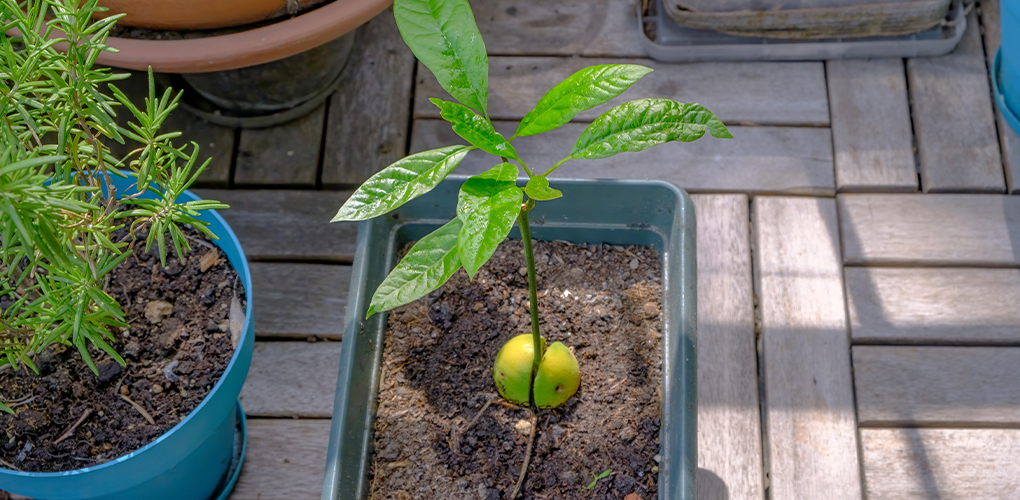
Why Grow an Avocado Plant from a Pit?
Besides being an enjoyable and educational gardening project, growing an avocado plant from a pit has several perks:
- It’s free! Use the pit from a store-bought avocado.
- A fun, beginner-friendly project for kids and adults alike.
- It makes a lovely indoor or patio plant, with glossy, green leaves and an exotic feel.
- You get to witness nature’s magic, watching roots and leaves emerge from a simple seed.
Even though it can take many years for a pit-grown avocado to bear fruit (if it does at all), it’s well worth it for the satisfaction of growing something beautiful from scratch.
What You’ll Need
Before you get started, gather these simple supplies:
- 1 ripe avocado
- Knife and spoon
- Paper towel or toothpicks
- A glass or jar of water
- Potting soil
- A container or plant pot (6-8 inches wide, with drainage holes)
- A warm, sunny location
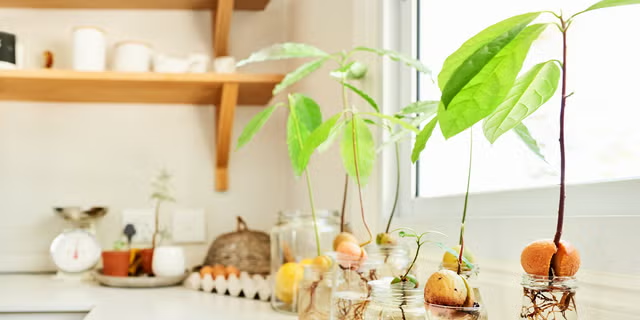
Step-by-Step: How to Grow an Avocado Pit into a Plant
Step 1: Remove and Clean the Pit
Carefully cut the avocado in half and remove the pit. Rinse it gently under lukewarm water to remove any remaining fruit flesh. Be careful not to damage the brown outer skin — this helps protect the seed.
Tip: Don’t peel the seed’s skin off. It acts as a natural barrier while the pit germinates.
Step 2: Determine the Top and Bottom
To properly position the pit for sprouting, you’ll need to identify the top and bottom:
- Top (pointy end): Where the stem will sprout.
- Bottom (flat end): Where roots will grow.
The bottom should always face downward when suspended in water or planted in soil.
Step 3: Choose a Sprouting Method
Option 1: The Classic Toothpick Method
This is the most popular way to grow an avocado pit.
Instructions:
- Stick three to four toothpicks evenly around the sides of the pit at a slight downward angle.
- Suspend the pit over a glass or jar filled with water, with the bottom end submerged about an inch.
- Place the glass in a warm, bright area out of direct sunlight.
- Change the water every 2-3 days to prevent mold and bacteria.
When to Expect Sprouting:
After 2-6 weeks, you should see the pit crack, roots emerging from the bottom, and a small shoot pushing upward.
Option 2: The Paper Towel Method
Another effective method involves wrapping the pit in a damp paper towel.
Instructions:
- Soak a paper towel with water and wring out excess moisture.
- Wrap the clean pit in the towel.
- Place the wrapped pit inside a plastic bag or container.
- Store it in a warm, dark area (like a cupboard).
- Check the paper towel regularly to keep it damp.
When to Expect Sprouting:
Roots and a sprout should appear within 3-8 weeks.
Step 4: Planting Your Sprouted Pit
Once the roots are a few inches long and the shoot is about 6-7 inches tall, it’s time to transfer your seedling into soil.
Instructions:
- Choose a well-draining pot about 6-8 inches wide, with drainage holes.
- Fill it with light, well-draining potting mix (cactus or citrus soil mix works well).
- Plant the pit with the top half exposed above the soil.
- Water thoroughly until it drains from the bottom.
Tip: Use a pot with a saucer to catch excess water.
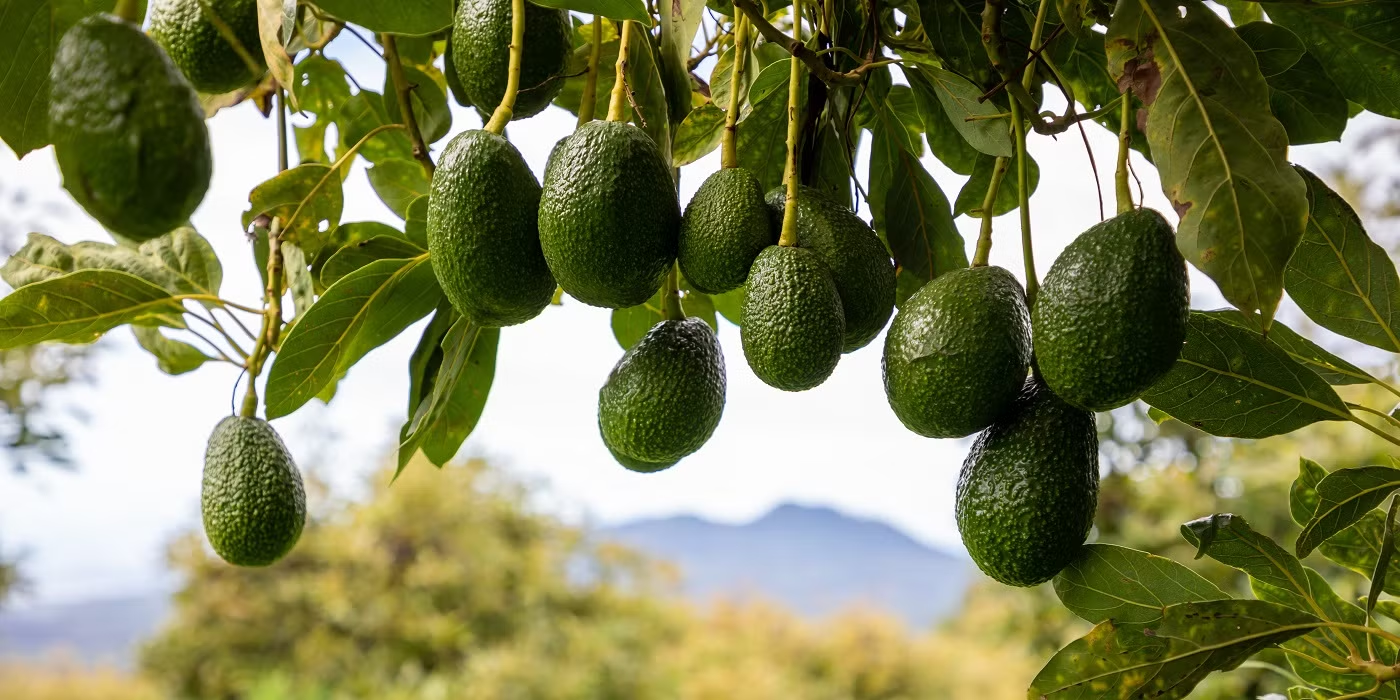
Caring for Your Avocado Plant
Now that you’ve planted your young avocado, here’s how to keep it thriving:
Light
Avocado plants love bright, indirect sunlight. Place yours near a sunny window where it gets at least 6 hours of light daily.
Outdoors: If you live in a warm climate (USDA Zones 9-11), you can move your plant outside in spring and summer.
Watering
Keep the soil consistently moist but never waterlogged. Water when the top inch of soil feels dry to the touch.
Warning: Overwatering is one of the quickest ways to kill an avocado plant. Ensure the pot drains well.
Temperature and Humidity
Avocados prefer temperatures between 65°F and 85°F. Avoid cold drafts or temperatures below 50°F.
They also appreciate moderate humidity. In dry indoor environments, mist the leaves occasionally or place the pot on a pebble tray with water.
Pruning
To encourage bushier growth, pinch off the top few leaves when your plant reaches about 12 inches tall. Regular pruning prevents legginess and promotes fuller foliage.
Fertilizing
Feed your avocado plant with a balanced, all-purpose houseplant fertilizer every 4-6 weeks during the growing season (spring and summer). Reduce feeding in fall and winter.
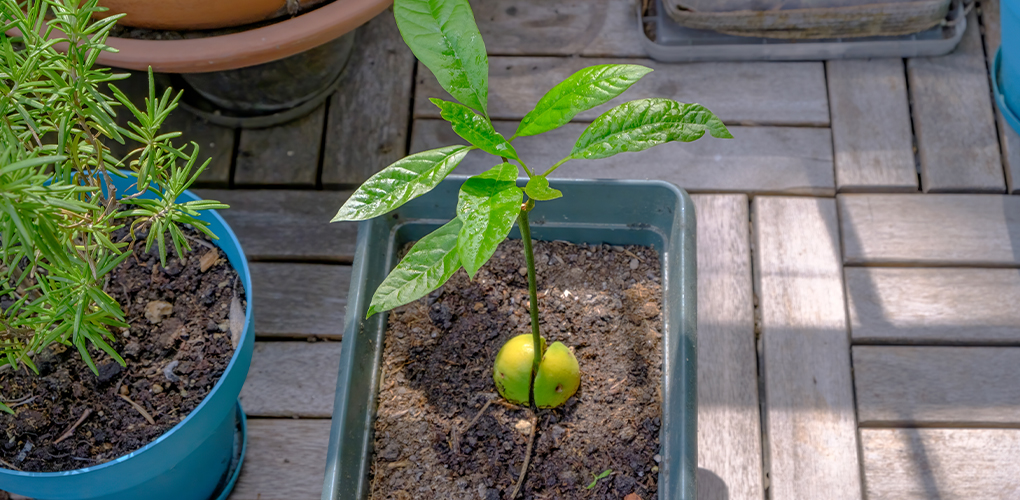
Can You Grow Fruit from a Pit-Grown Avocado?
It’s possible but rare — and it can take 7-15 years (or never) for a seed-grown avocado to produce fruit. Even if it does, the avocados may differ in size, texture, and flavor from the parent fruit because avocados grown from seeds don’t stay genetically true.
Commercial orchards use grafted trees to ensure reliable fruit production. But whether or not your plant ever fruits, it makes a charming, tropical-looking addition to your home or garden.
Common Problems and How to Fix Them
- Brown Leaf Tips: Often caused by dry air or inconsistent watering. Increase humidity and check soil moisture regularly.
- Yellowing Leaves: May indicate overwatering. Let the soil dry out slightly before watering again.
- Slow Growth: Avocado plants slow down in winter. Resume regular care in spring.
Fun Facts About Avocado Plants
- Avocado trees can grow up to 60 feet tall in nature.
- They’re native to Mexico and Central America.
- The avocado is technically a berry!
- In ancient times, avocados symbolized fertility and love.
Final Thoughts
Growing an avocado plant from a pit is one of those charming gardening projects that reminds you of nature’s simple wonders. Whether you’re after a fun indoor plant, a lush patio accent, or just the satisfaction of nurturing something from seed to sapling, this easy-to-follow process delivers.
With a little patience, warmth, and care, you’ll have a thriving, leafy avocado plant to brighten your home. Who knows — it might even surprise you with fruit one day!

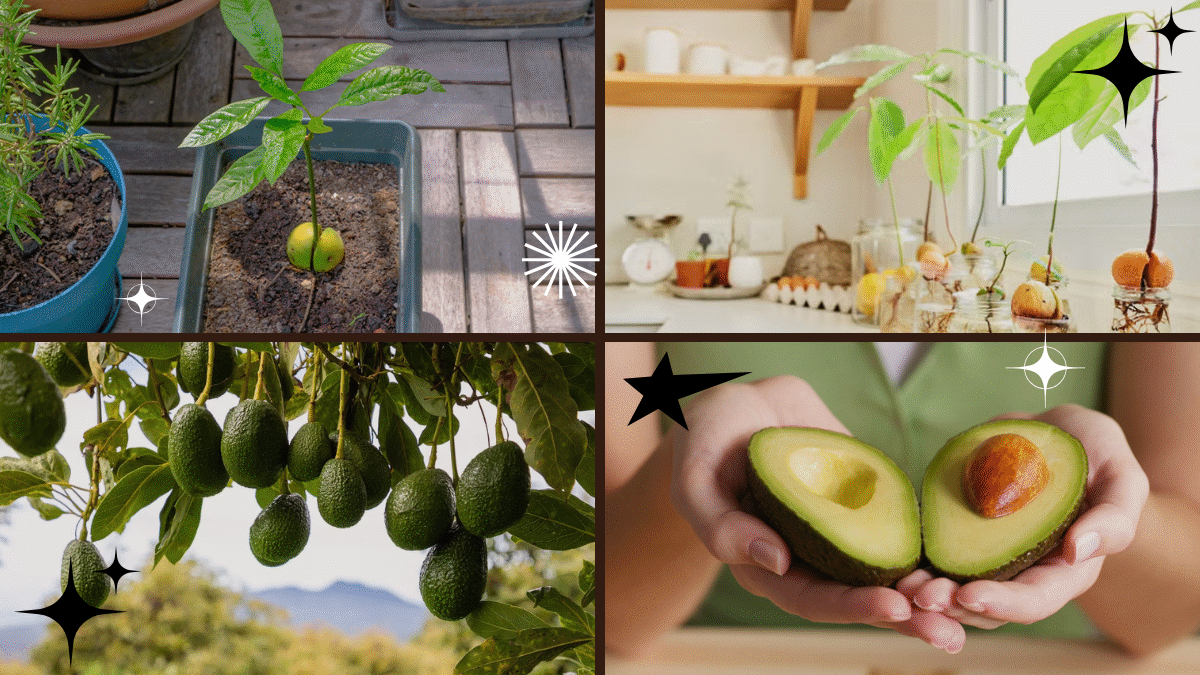



Leave A Comment